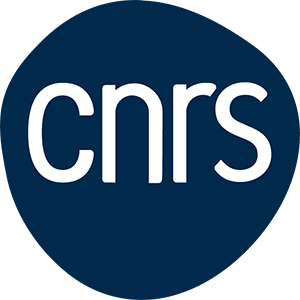Thesis
Ultrafast spin currents and ferroic oxides
Solid state physics, surfaces and interfaces
Radiation-matter interactions
This PhD thesis lies at the intersection of ultrafast spintronics and the physics of spin currents on sub-picosecond timescales. Pure spin currents are currently attracting considerable attention due to their central role in the development of next-generation spintronic devices. As data consumption continues to grow exponentially, information and communication technologies must process increasingly large volumes at higher speeds, all while minimizing energy consumption. In this context, ultrafast information processing has become a major challenge.
Pure spin currents offer several decisive advantages: in addition to their dissipationless propagation, they can now be generated, transmitted, and detected on timescales of just a few hundred femtoseconds. This progress paves the way for the emergence of ultrafast spintronic components and devices operating in the terahertz range.
The aim of this thesis project is to investigate the fundamental mechanisms governing the generation and propagation of pure spin currents on picosecond and sub-picosecond timescales, with a particular focus on ferroic oxides. These materials exhibit a wide range of remarkable and tunable properties, making them ideal candidates for enabling ultrafast spin current functionalities and addressing the societal challenges of tomorrow.
The core of this thesis work will involve the implementation of time-resolved optical and magneto-optical techniques to probe the ultrafast magnetic dynamics in epitaxial thin films of ferromagnetic and antiferromagnetic oxides. The main expected outcomes include overcoming key bottlenecks: on one hand, the tunability of ultrafast spin current generation through the half-metallicity of selected ferromagnetic oxides; and on the other hand, the control of spin information propagation at terahertz frequencies in antiferromagnetic oxides.
Pure spin currents offer several decisive advantages: in addition to their dissipationless propagation, they can now be generated, transmitted, and detected on timescales of just a few hundred femtoseconds. This progress paves the way for the emergence of ultrafast spintronic components and devices operating in the terahertz range.
The aim of this thesis project is to investigate the fundamental mechanisms governing the generation and propagation of pure spin currents on picosecond and sub-picosecond timescales, with a particular focus on ferroic oxides. These materials exhibit a wide range of remarkable and tunable properties, making them ideal candidates for enabling ultrafast spin current functionalities and addressing the societal challenges of tomorrow.
The core of this thesis work will involve the implementation of time-resolved optical and magneto-optical techniques to probe the ultrafast magnetic dynamics in epitaxial thin films of ferromagnetic and antiferromagnetic oxides. The main expected outcomes include overcoming key bottlenecks: on one hand, the tunability of ultrafast spin current generation through the half-metallicity of selected ferromagnetic oxides; and on the other hand, the control of spin information propagation at terahertz frequencies in antiferromagnetic oxides.
SL-DRF-25-0853
Master en Physique
October 1 2025
Paris-Saclay
Physique en Île-de-France (EDPIF)
Saclay
CEA
Direction de la Recherche Fondamentale
Institut rayonnement et matière de Saclay
Service de Physique de l’Etat Condensé
Laboratoire Nano-Magnétisme et Oxydes



